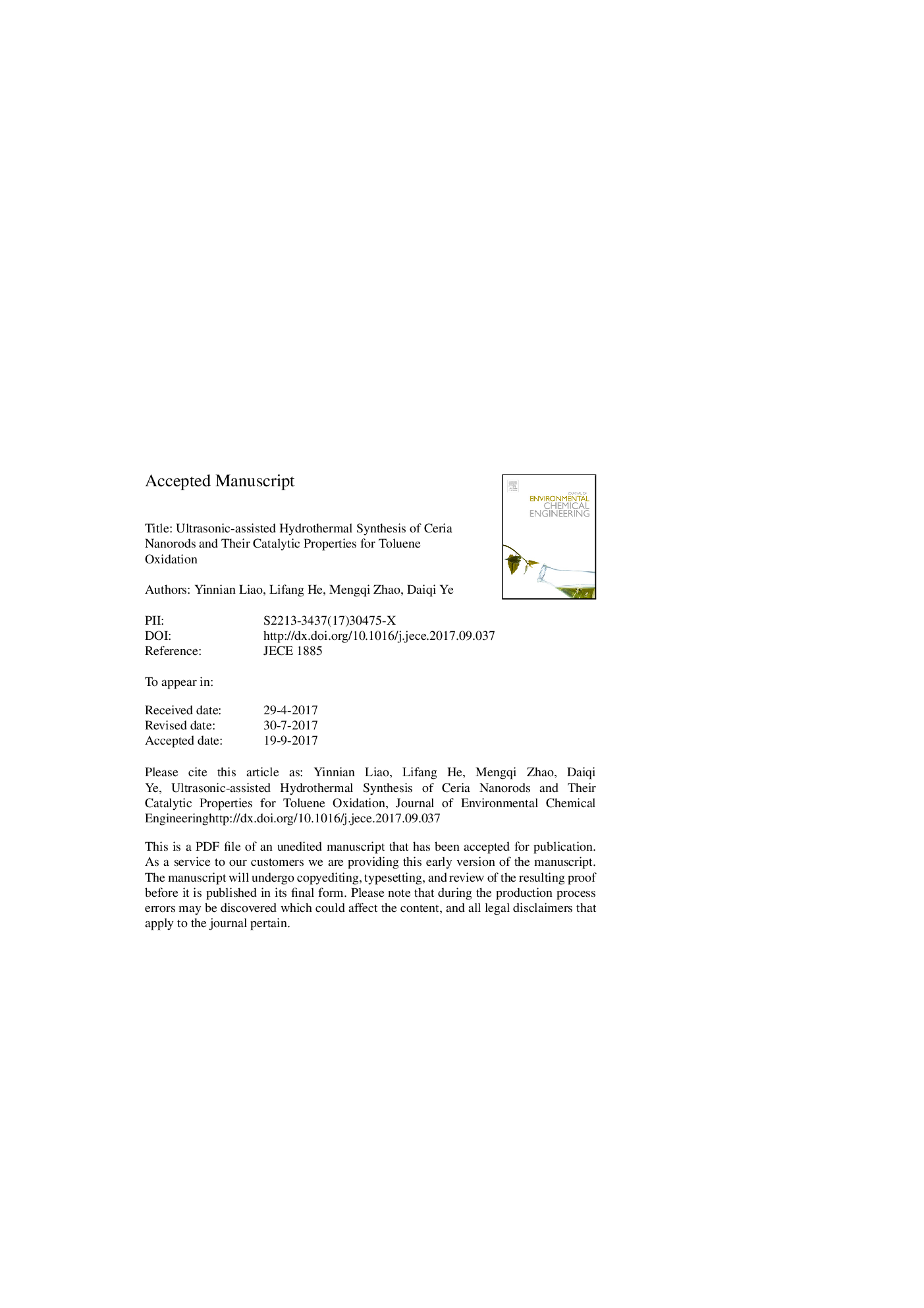| Article ID | Journal | Published Year | Pages | File Type |
|---|---|---|---|---|
| 6664336 | Journal of Environmental Chemical Engineering | 2017 | 25 Pages |
Abstract
Ceria nanorods with relatively high yield were successfully prepared by a convenient hydrothermal reaction method followed by ultrasonication without any templates or surfactants. The cerium precursor, concentration of NaOH solution, and the employment of ultrasonic have been demonstrated to be the crucial factors for the formation of CeO2 nanorods. NO3â ions, excluding Clâ, SO42â, and CH3COOâ, were designated to act as the inhibitors in the morphogenetic process forming the rods. Nanorods could only be shaped using relatively high concentrations of alkali solution. Ultrasonication proved to be an effective means of improving the yield of ceria nanorods. Among the different content of nanorods, the catalytic activity of high content of nanorods was obviously the best. Thus, properties of CeO2 could be improved by modifying the morphology. Furthermore, the catalytic pathway for toluene oxidation over the ceria nanorods has been explored by in-situ FTIR.
Keywords
JCPDSt50HRTEMO2-TPDH2-TPRIn-situ FTIRflame ionization detectorTemFourier transform infraredFIDHydrothermalFTIRUltrasonicCatalytic activitySEMscanning electron microscopeHigh Resolution Transmission Electron MicroscopyTransmission electron microscopyX-ray diffractionXRDpolyethylene glycolPEGgas chromatographJoint Committee on Powder Diffraction Standards
Related Topics
Physical Sciences and Engineering
Chemical Engineering
Chemical Engineering (General)
Authors
Yinnian Liao, Lifang He, Mengqi Zhao, Daiqi Ye,
